The list in brief1.Best Overall2.For Streaming3.For Talking4.For Saving5.For Music6.For Podcasting7.Shopping Tips8.Savings
Thebest gaming headsetshave some pretty impressive built-in mics these days, but they’re built to multi-task — they won’t deliver that professional-grade clarity you hear on the radio. A standalone mic will not only make your voice sound better and clearer to your teammates, coworkers, and viewers, it can also be used for other things (such as podcasting or recording music).
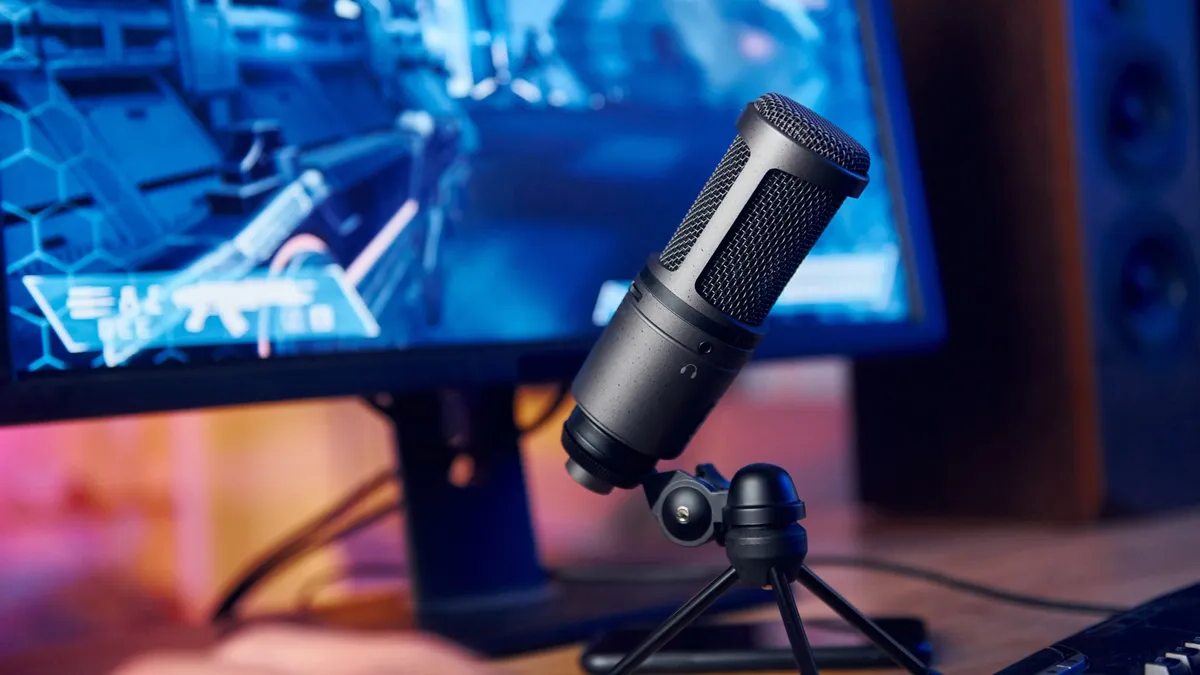
You don’t need to go full-onaudionerd and get an XLR mic (though you can) to upgrade your voice comms — a spare USB port or mic jack is usually all you need for an interface. If you’ve already upgraded to one of thebest gaming keyboardsand one of thebest gaming mice, it’s time to pick up a standalone gaming mic.
Best Overall
Best Gaming Microphone for MostA sturdy, professional mic with upgraded circuitry that produces full, warm, broadcast-quality vocals in a plug-and-play package.
Read more below
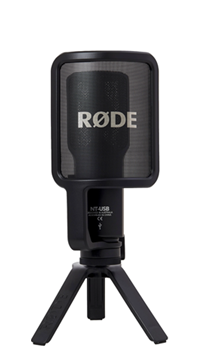
For Streaming
Best Gaming Microphone for StreamingThe newest iteration of an iconic gaming mic with great sound, four polar patterns, and highly customizable aRGB lighting.
For Talking
Best Gaming Microphone for TalkingA long-standing favorite mic with bright, colorful RGB, four polar patterns, and the best tap-to-mute implementation around.
For Saving
Best Budget Gaming MicrophoneThe new, darker, $60 snowball that sounds awesome out of the box.
For Music
Best Gaming Microphone for Music RecordingA hi-res mic with 96 kHz/24-bit recording, on-mic controls, and a sturdy pop filter.
For Podcasting
Best Gaming Microphone for PodcastingA premium mic with warm, detailed vocals and a pleasant high-end — perfect for speaking.
The Best Gaming Microphones You Can Buy Today
Why you’re able to trust Tom’s HardwareOur expert reviewers spend hours testing and comparing products and services so you can choose the best for you.Find out more about how we test.
Reasons to buy
Reasons to avoid
Rode’s NT-USB+ retains the sturdy, professional design of its predecessor — the NT-USB — but adds some pretty impressive upgrades, including enhanced circuitry, Rode’s Revolution Preamp technology, and an internal DSP (as well as USB-C connectivity). This condenser microphone produces excellent vocals with a solid low end and very little self noise — giving you broadcast-quality sound in an easy-to-use, plug-and-play package.
The NT-USB+ comes with a 9.8-foot (3m) USB-C to USB-C cable, a plastic tripod desktop stand, a detachable metal mesh pop shield, and a detachable ring mount that can be easily mounted on a boom arm (or a different stand). It features a 3.5mm high-power headphone output for zero-latency monitoring on the mic, as well as two dials to control mix and headphone volume level. It does not have a gain dial or a mute button. The NT-USB+’s internal DSP allows for advanced audio processing, which can be activated using one of Rode’s apps — Rode Central, Rode Connect, or the Rode X Unify software.
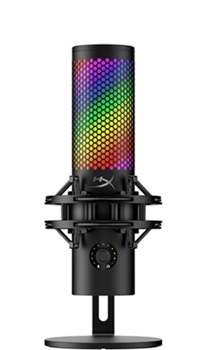
The NT-USB+ improves upon the NT-USB — already an impressive USB microphone — to deliver fantastic-sounding, clean audio with a low noise floor. If you’re looking for a mic that will make you sound great while you’re chatting with teammates or streaming over Twitch, look no further.
HyperX’s QuadCast 2 S is the most recent update to the iconic gaming mic, and it’s still a fantastic mic for gaming and streaming. While the mic’s 192 kHz / 32-bit sample/bit rate is definitely overkill for a gaming mic, it makes you sound great right out of the box and features bright, attractive, highly-customizable aRGB lighting that’s perfect for showing off to your streaming audience.
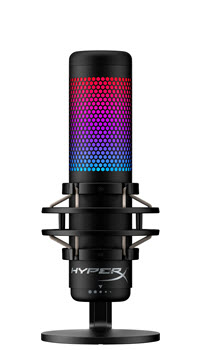
The QuadCast 2 S looks a lot like its predecessor, theQuadCast S, with a cylindrical shape and a built-in shock mount. Both the mic and the shock mount have been redesigned, however — the QuadCast 2 S now has a multi-function knob on the front to control gain, monitor volume, playback/monitor mix, and polar pattern selection, and the shock mount has been reworked so the mic is now extremely easy to remove. The mic comes with a sturdy desktop stand, but the shock mount can also be mounted to any mic stand or boom arm with 3/8" or 5/8" threading. The mic does retain its predecessor’s tap to mute button on top, which is still the best mute system I’ve seen on any gaming mic.
The QuadCast 2 S’s big update is its recording quality, as it can now record in the wildly unnecessary 192 kHz / 32-bit resolution. While I can’t imagine anybody using this mic to record in that resolution, it’s nice to at least see the step up from the QuadCast S’s 48 kHz / 16-bit recording. While the QuadCast 2 S does best when it’s used for picking up one person’s voice, it does have the option to record in four different polar patterns, which makes it more versatile than most of the mics on this list.
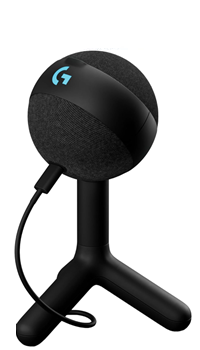
The HyperX QuadCast S is another gamer-oriented USB mic that’s been around for a while (the QuadCast S is a refreshed version of the originalQuadCast). The QuadCast S will work for a variety of situations, thanks to its large capsule, which features an internal pop filter and four polar patterns. It comes with an attached shock mount and a desktop stand, and — as of the most recent refresh — in black and white colorways.It has on-mic gain control and a surprisingly unique touch-sensitive mute button that eliminates the audible pop you get when muting mics with mechanical buttons/switches. The mic’s capsule is fully-lit with bright, colorful RGB lighting (which might be a tad ostentatious for some); this goes red when the mic is muted, leaving no ambiguity as to whether people can hear you. (In other words, it’s perfect for conference calls.)The QuadCast S’s main downside is that it’s limited to 48 kHz/16-bit recording — which is fine for voice chats and streaming, but not great for podcasting or recording music. If you don’t need four polar patterns, theHyperX DuoCastrecords audio in 96 kHz/24-bit format, and is smaller and less flashy than the QuadCast S (same tap-to-mute, though).Read:HyperX QuadCast S Review
Logitech’s Yeti Orb is the soft successor to the classic Blue Snowball: a round, ball-shaped USB condenser microphone with a cardioid polar pattern and a frequency response rate of 70 - 20,000 Hz. Featuring customizable RGB lighting, a removable desktop stand, and a softer, more modern-looking design, this perfect plug-and-play mic sounds fantastic for its budget-friendly $60 MSRP.
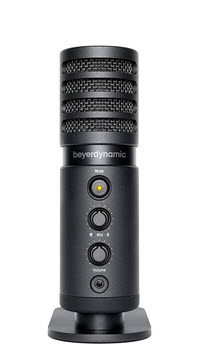
The Yeti Orb is simple by design. It only has one polar pattern (cardioid), but it records audio at 24-bit / 48 kHz and has a relatively wide frequency response range. It comes with a sturdy (if slightly short) plastic tripod stand and has two mounting points that let you mount the mic either straight on or at an angle. It works very well out of the box, offering up full, relatively warm vocals and keeping plosives at bay, but it does do best when it’s optimally positioned (i.e., not behind your keyboard). It works with Logitech’s Blue Vo!ce software, which features real-time voice modulation as well as a 3-band EQ, a high-pass filter, noise reduction/noise gate, a compressor, a de-esser, and a de-popper, as well as vocal effects and a sound sampler library for streamers.
The Yeti Orb doesn’t have any on-mic controls, but it does have customizable RGB lighting that can be set to change color when the mic is active/idle. The RGB lights up the Logitech G logo on the mic’s band, but it features a hood that lets you see the color even if the logo is facing away from you.
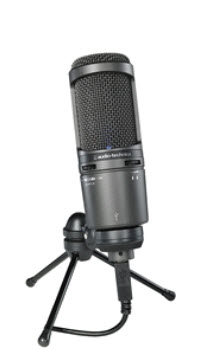
If you like to break out into song during your Twitch stream, this music-centric microphone is a great choice. Beyerdynamic is a respected name in pro audio, and the company’s expertise in the studio carries over beautifully in this compact, no-fuss USB mic.
Unlike most USB gaming mics, the FOX offers hi-res 96 KHz/24-bit recording quality, which is impressive for a mic you can simply plug in via USB and hit record on. This won’t make much of a difference if you’re on a platform that compresses audio and video, such as YouTube or Twitch, but if you’re into podcasting or music production you’ll probably want the option to go beyond CD-quality 44 KHz/16-bit.
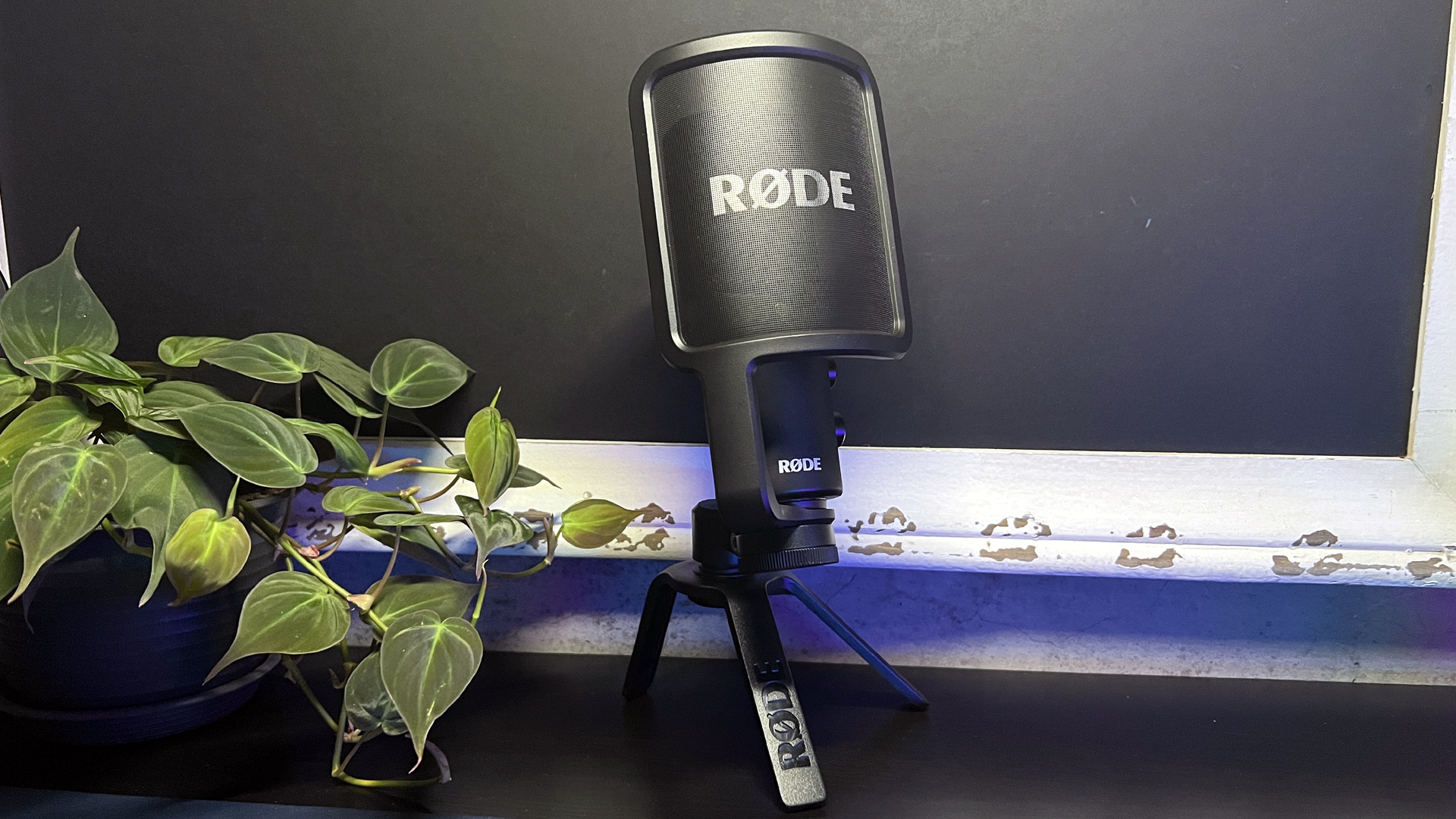
The mic features on-mic controls for mix and volume, as well as a headphone input for zero-latency inline monitoring. The preamp that outputs this monitoring signal ran a little hot in our testing, distorting well before the mic itself did, but it’s still a useful feature when the gain’s rolled off.
There’s also a mute button at the top, and a high-low gain toggle (essentially a pad) at the rear of the mic. Beyerdynamic throws in a sturdy metallic pop shield that clips on without the need to unscrew anything, and you can angle the mic on its stand.

The Beyerdynamic FOX is loaded with features, but ultimately it’s the sheer recording quality and usability that wins out and makes the FOX our pick for home studios.
Like Beyerdynamic, Audio-Technica is a well-respected name in the pro audio industry, and it brings decades of expertise to the table with the AT2020USB+. This is a medium-diaphragm condenser with a cardioid polar pattern, which makes it somewhat specialized to lone vocal recording — but luckily it’s brilliant at that very thing.
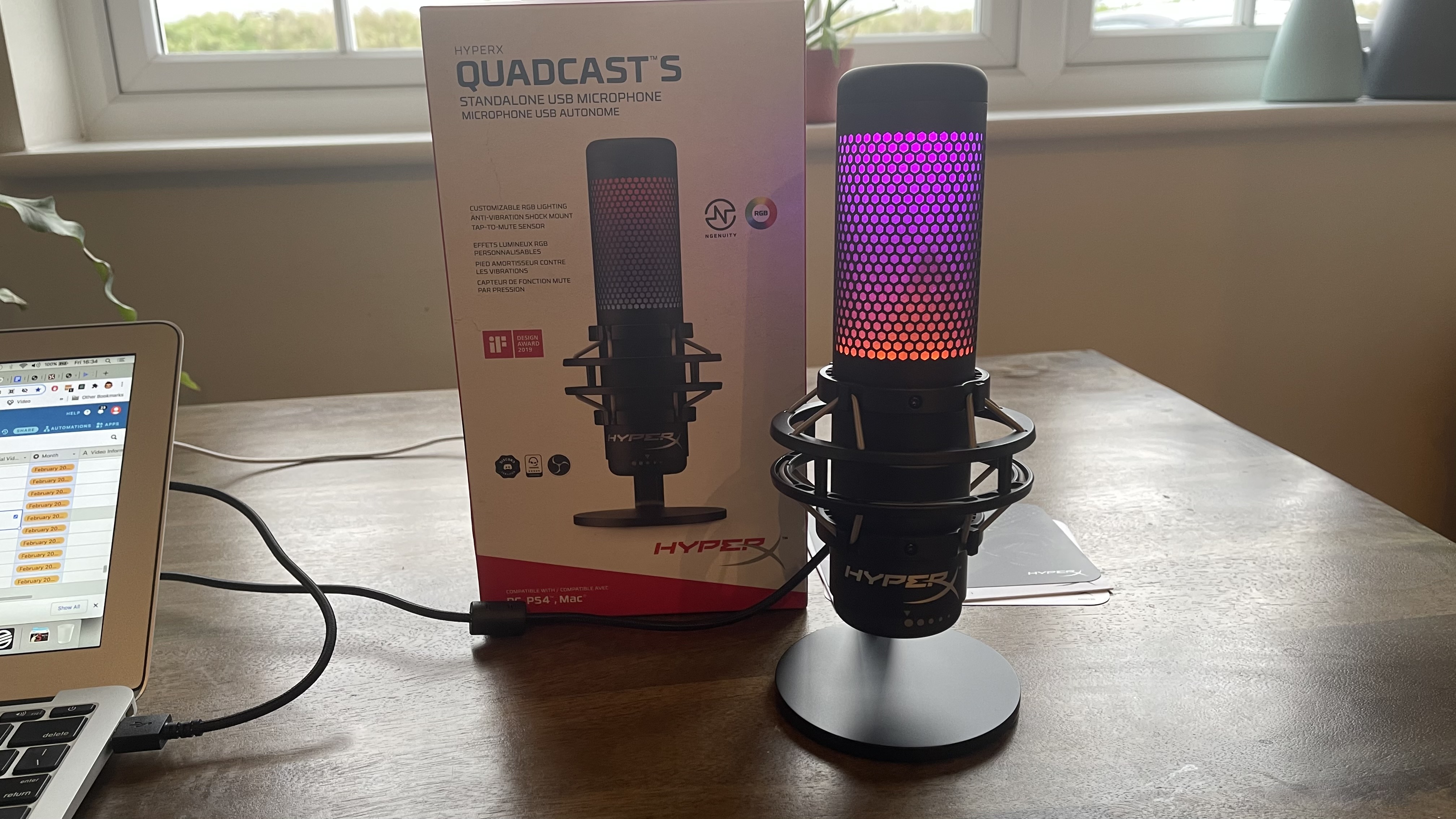
In a straight shootout with the Beyerdynamic FOX, the AT2020UBS+ comes incredibly close to matching the FOX’s warmth and detail but falls slightly short. Yet, the particular characteristics of the Audio-Technica — a breathiness, and a really pleasant high end — make it perfect for spoken vocals.
We recommend a couple of additional purchases for this mic, though: a pop shield and a boom arm. We’re surprised a pop shield isn’t included, but it’s an inexpensive separate purchase. As for that boom arm, the tripod design felt a little wobbly during our testing. We preferred mounting it up above us on a nice, sturdy boom before hitting record, so we could relax and not spend our session worrying about knocking into the desk and picking up bumps and scratches on the waveform.
Other Gaming Mics We Tested
Rode PodMic USB
Rode has updated its popular PodMic with USB-C connectivity alongside its traditional XLR connectivity. This makes the PodMic a viable option for most gamers and streamers where the original PodMic wasn’t (as XLR microphones can’t be plugged directly into a PC). The PodMic USB is a sturdily-built end-address dynamic mic with a cardioid polar pattern and an integrated swing mount.
Though the USB connectivity adds convenience to this mic, it’s still not the most convenient mic for new streamers to pick up as it doesn’t come with a stand. It comes with a swing mount that can be attached to a stand, or, more likely, a boom arm. It features an internal pop filter (as well as a removable external pop shield) and produces clean, warm vocals thanks to its end-address design and Rode’s incorporated Revolution Preamp technology. In addition to the USB-C and XLR ports, the PodMic USB also has a 3.5mm headphone jack and an on-mic volume wheel for zero-latency monitoring.
Read:Rode PodMic USB Review
How We Test Gaming Mics
First, we inspect each mic’s build quality, which takes into account size, weight, and the materials used. We consider the mic’s overall design, including general aesthetic, on-mic controls (mute, gain, etc.), and whether it has a headphone jack for direct monitoring. We also take a look at accessories, which should include a desktop mount and an adapter for attaching the mic to a boom arm. We look for sturdy, adjustable desktop stands and built-in shock mounts and pop filters.
We then use the mic in a variety of situations to assess performance, including voice chatting over several standard meeting/chat apps (GoogleVoice,MicrosoftTeams, Zoom, and Discord), recording vocals, music, and silence via Microsoft’s Sound Recorder app, and using the mic in virtual routing environments such as Rode’s UNIFY software and SteelSeries' Sonar app. We test each mic’s ability to cancel out background noises using a variety of noises: typing (we test with both linear and clicky switches), fans, music, dogs barking, and general chatter. We also test each mic’s mute feature (if applicable), to see if muting/unmuting the mic makes noise.
We first run our tests without installing software (unless a firmware update is critical) to see how the mic runs as a plug-and-play device. Then we install any bundled software and take a look at what settings (e.g. noise cancellation, EQ, etc.) can be changed. We run our tests again with the software running to determine how well the miccansound if you take the time to set it up. We think it’s safe to assume that the majority of users looking at standalone USB gaming mics are going to use them with the software, so post-production effects and software tweaks do impact the final score.
Quick Shopping Tips
🎙Polar Pattern:The polar pattern describes the area around a mic where it picks up noise. Some gaming mics offer more than one polar pattern.
🎙Cardioid:The most common polar pattern; best suited for recording one person’s vocals. Cardioid mics create a narrow cone around one side — the mic only picks up sound from that cone, blocking out the rest. Variations such as supercardioid or the more extreme hypercardioid pick up sound using even narrower cones.
🎙Bidirectional:Has two fields of polarity — one on either side of the mic. This is better for recording two voices simultaneously, though it’s always better to use separate mics to record multiple voices, if possible.
🎙Omnidirectional:The opposite of cardioid — this polar pattern picks up sound from all directions, and is best for capturing room noise and ambient sounds such as reverb from a loud instrument. This isn’t the best polar pattern for a gaming mic, but it can be used to record multiple voices in close proximity, if you’re in a pinch.
🎙USB Mic or XLR Mic:USB-based gaming mics are not the only option for the streamer, competitive gamer, or home recording enthusiast who happens to play someFortniteon the side. The other option is an XLR-based studio mic, which requires an audio interface. When used properly, studio mics offer higher quality and more versatile recordings, but don’t have an ADC, a built-in digital-to-analog converter (DAC), or built-in noise suppression.
🎙Inline Monitoring:Many gaming microphones offer inline monitoring via a built-in headphone jack, which lets you hear the raw audio, lag-free, directly from the mic. Inline monitoring lets you hear exactly how you sound, so you don’t end up accidentally shouting to be heard over background noise that’s only on your end.
🎙Frequency Response Range:This tells you the lowest- and highest-pitched sounds the microphone membrane is capable of picking up. The baseline range for a decent mic is 20 Hz - 20,000 Hz — the limits of human hearing. Some mics go beyond this, and while this may seem unnecessary because you may’t hear the extra details they pick up, you can “feel” subharmonics within the low-end frequencies. (The same goes for the other end of the spectrum — you can’t hear 22,000 Hz unless you’re a Pomeranian, but you can “feel” the extra harmonic details in the high-end tones your ear does pick up.) This is going to be more important for things like music recording than it is for streaming or podcasting, for obvious reasons.
Savings on the Best Gaming Microphones
Whether you’re shopping for one of the best gaming microphones on our list above or a similar model, you may find savings by checking out our lists ofRazer promo codes,Newegg promo codesorBest Buy promo codes.
Get Tom’s Hardware’s best news and in-depth reviews, straight to your inbox.
Sarah Jacobsson Purewal is a senior editor at Tom’s Hardware covering peripherals, software, and custom builds. you may find more of her work in PCWorld, Macworld, TechHive, CNET, Gizmodo, Tom’s Guide, PC Gamer, Men’s Health, Men’s Fitness, SHAPE, Cosmopolitan, and just about everywhere else.